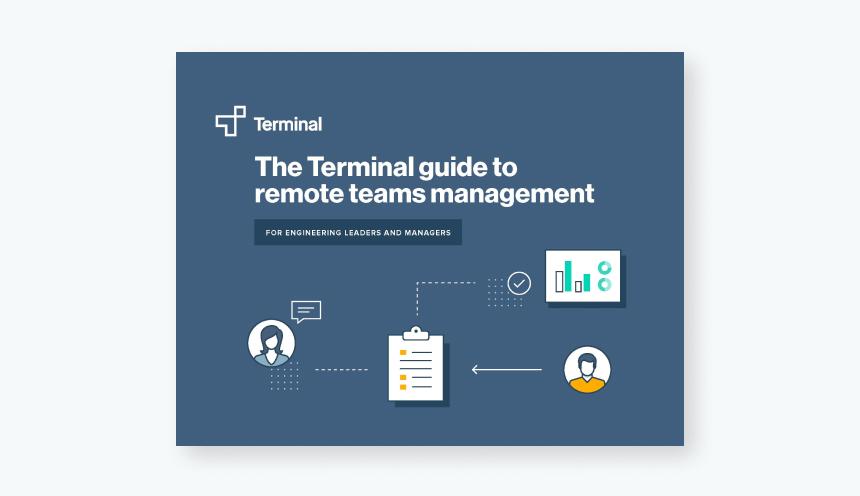
Remote HR | Blog Post
Stronger Software Development Lifecycles Through Nearshore Time Zone Overlap
Laura Berlinsky-Schine
Share this post
Greater diversity, enhanced innovation, and access to niche skills. These are just a few of the benefits of remote work.
The rise of remote work has led to a surge in cross-border partnerships and working arrangements. In 2023, tech was the industry with the highest percentage of remote workers globally, with 67% of tech employees working fully or mostly remotely. But there are also some downsides to remote work. Chief among them are lags in communication and collaboration.
Fortunately, a time zone overlap with workers in other parts of the world can mean more productive and engaging work. This is why many companies hire developers from Latin America, to take advantage of LatAm time zones.
Research shows that “culturally diverse teams separated by physical distances across multiple time zones face significant challenges in collaborating effectively with each other.” Nearshore teams not only have a time zone overlap but also have cultural similarities with the US, strengthening team dynamics and results.
Time Zone Overlap: Definition and Importance
Time zone overlap refers to intersecting time zones. For example, depending on the time of year (Daylight Savings Time or not), Mexico City is 1-2 hours behind New York City. That means that teams in both countries share most of their work days.
When teams in different locations are working the same business hours, they can communicate and collaborate in real-time. Synchronous work leads to smoother workflows and fewer hiccups and minimizes delays.
Nearshore teams, such as those in Latam, offer many benefits—and time zone overlap is among the most important.
Benefits of Time Zone Overlap
Synchronous Collaboration
When team members are in overlapping time zones, it’s much easier to facilitate meetings. All voices have input at the same time. Synchronous collaboration leads to stronger connectivity and communication. Reading non-verbal cues like facial expressions can help workers better understand one another and grasp their meaning. Time zone overlaps also enable spontaneous collaboration—often a necessity—and joint decision-making.
Immediate Responses
Get replies in real-time. When you’re working the same or similar hours as your team members, you don’t have to wait until the next business day for responses. This is especially important for complex and time-sensitive projects. Immediate replies and feedback reduce the chances of miscommunication and things getting lost in translation.
Faster Problem-solving
Working in overlapping business hours enables brainstorming and real-time problem identification. You can explore concepts together and have creative sessions using Miro boards or other tools to generate and build upon ideas. This spurs creativity and allows you to resolve issues in real-time. Team members can bounce ideas off one another, encouraging greater innovation and collaborative problem-solving.
Greater Efficiency and Productivity
Working together in the same or a similar time zone means you can troubleshoot, resolve bugs, and stay aligned. This helps you stay productive and efficient, as well as keep projects on schedule.
Fostering a More Positive Atmosphere
No one should be left out of the conversation. Working in overlapping time zones enables greater participation, improving teamwork and fostering engagement. Team members build stronger relationships and more authentic connections, promoting inclusivity and trust.
Larger Talent Pool
Remote work allows you to eliminate geographical barriers. You can hire people in an overlapping time zone, such as a Latam time zone. You can take advantage of cost-effective talent, tap into hard-to-find skill sets, and have a more diverse workforce.
Tips for Collaborating Across Time Zones
Working together across time zones requires careful planning, even with nearshore partners.
To start, establish preferred working hours for all team members. Ask team members to set their time zones and work hours in collaboration tools like Slack so everyone knows when their colleagues are available. Bear in mind that some team members may prefer to work early or late, outside of typical business hours.
Use a shared calendar to track vacations, national holidays, and absences. This will help you collaborate more effectively. Leverage tools like World Clock Meeting Planner to find times that work for everyone.
Even in the case of significant time zone overlap, you should make use of asynchronous communication, too. This is important for encouraging team members to remain independent. Project management tools such as Jira allow you to track and manage project progression without micromanaging. Ensure that everyone knows how to use these tools and that deadlines are clearly marked.
Finally, underscore the importance of communication—synchronous or asynchronous. Be clear but concise, ensuring understanding at every turn. Document everything; that allows you to track projects and reference discussions.
What Do You Do When You Don’t Have Overlapping Time Zones?
It is not always feasible to hire nearshore talent from a LatAm time zone. Perhaps, for example, you want to hire talent from Europe or Asia. There are some upsides to working with offshore software engineers. For example, offshore workers will be active when US team members aren’t working, ensuring around-the-clock attention and a 24-hour total workday.
However, without overlapping time zones, you’ll need to take extra care to ensure seamless workflows. Communication must be strong because you won’t be able to address issues in real-time. You will largely need to rely on asynchronous communication and collaboration, while having regular check-ins and updates.
Consider async tools, such as Loom for sharing videos and feedback. These tools help you coordinate and ensure everyone is on the same page.
Be mindful of different work cultures—you may not always align on communication and collaboration styles. Your team members must have English language fluency and alignment as well.
Finally, hone your onboarding process to keep it from being overly tedious. Employees are more likely to remember the various procedures for aysnc work if the training is engaging, not just informative.
Terminal Market Time Zone Overlaps
At Terminal, our markets are aligned for maximum collaboration with US businesses. While there is no one unique Latam time zone, our Chile, Colombia, Costa Rica, and Mexico markets have overlapping time zones with most areas of the US. You can also find tech talent from Canada, which also shares time zones with the US.
By choosing a nearshore partner, you can accelerate development and improve collaboration. Wondering whether nearshore or offshore development is right for you? Find out more about the pros and cons of each.


